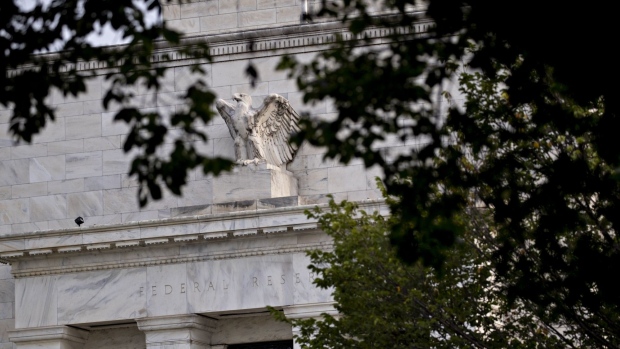Sep 18, 2019
Fed Seen Rebuilding Balance Sheet to Ease Funding Strains
, Bloomberg News

(Bloomberg) -- After the chaos this week in short-term funding markets, the Federal Reserve faces yet another tough task: how to shore up the multitrillion-dollar network that keeps funds flowing through the U.S. financial system without stoking fears of a systemic problem or fueling talk of a recession.
Morgan Stanley expects the central bank will turn to rebuilding its balance sheet by announcing permanent open market operations -- known as POMOs -- to support funding markets.
These procedures aren’t anything unusual for the central bank, which has long used POMOs to help stabilize reserves, and offset the growth of currency in circulation. But the Fed will have to communicate how they’re distinct from the aggressive asset purchases it undertook in the wake of the 2008 crisis to help drag the economy out of recession.
“POMOs and QE are operationally similar, in that they both employ secondary market purchases,” said Morgan Stanley strategist Kelcie Gerson. “QE has an inherently easing bias as it is intended to grow reserves quickly, whereas POMOs are intended to keep reserves steady.”
The recent strains in funding markets -- which peaked with a spike in the repo rate Tuesday -- show banks have already blown through the $200 billion-$300 billion capital cushion that the Fed thought was sufficient, Morgan Stanley strategists wrote in a note for clients Wednesday.
A possible route for the Fed, according to the firm, would be to stage a series of temporary operations to buy T-bills amounting to a total of $125 billion over the coming few weeks, before switching to permanent operations of roughly $9 billion a month.
“The buffer of reserves that the Fed was hoping to have in the system clearly isn’t there any more,” Morgan Stanley’s global head of interest rate strategy, Matt Hornbach, said on Bloomberg TV Wednesday. “When you start losing control of the target rate, you need to increase reserves in the system.”
The Fed’s interventions with two separate reverse repo operations to provide liquidity -- the first in a decade -- have calmed markets and driven collateral rates back to more normal levels. However, pressure remains on the central bank to address concerns about the possible scarcity of funds in the system, particularly after the New York Fed reported Wednesday that the effective fed funds rate breached policy makers’ 2.25% cap the day before, coming in at 2.30%.
Hornbach said he expects a POMO announcement in the Fed’s communications later Wednesday.
To contact the reporter on this story: Emily Barrett in New York at ebarrett25@bloomberg.net
To contact the editors responsible for this story: Benjamin Purvis at bpurvis@bloomberg.net, Greg Chang, Debarati Roy
©2019 Bloomberg L.P.